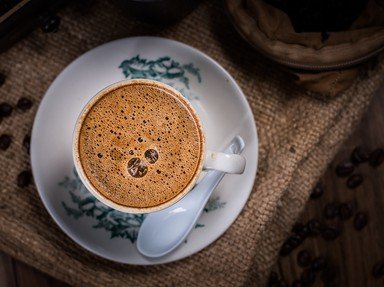Quiz Answer Key and Fun Facts
1. Coffee was imported to Europe in the 15th century, from North Africa via Venice, but originated in the Arab world. What nickname was it given there?
2. In 2022, which country ranked the highest in terms of coffee consumption per capita? (Perhaps Kimi Räikkönen enjoyed a cup on a race day.)
3. King Frederick II of Prussia, aka Frederick the Great, was a coffee lover. He liked to take his coffee with champagne - but what condiment did he also add to it?
4. This critter pictured here is an Asian palm civet. In Indonesia, a very unusual type of coffee is created from partially digested coffee cherries that have - to put it politely - gone in one end of a civet and come out the other. What is the name of this crazy coffee?
5. In which US state, which is also famous for pineapples, is coffee grown commercially?
6. If you're ordering a coffee in Italy, be sure to specify that you want a 'caffè latte'. If you just ask for a latte, what will you get?
7. Coffee was scarce in the UK during the Second World War because of rationing. Which plant was used as a coffee substitute?
8. Coffee is thought to have originated from Ethiopia, and one popular legend claims that it was discovered by a goatherd called Kaldi, after his goats ate some coffee berries. What happened to the goats after they ate the berries?
9. Cà phê trung is a type of coffee consumed in Vietnam. As well as coffee and milk, what other ingredient does it contain?
10. Which ballet, with music by Piotr Ilyich Tchaikovsky, featured a dance based on coffee and set to Arabian-style music?
Source: Author
Kankurette
This quiz was reviewed by FunTrivia editor
Bruyere before going online.
Any errors found in FunTrivia content are routinely corrected through our feedback system.
